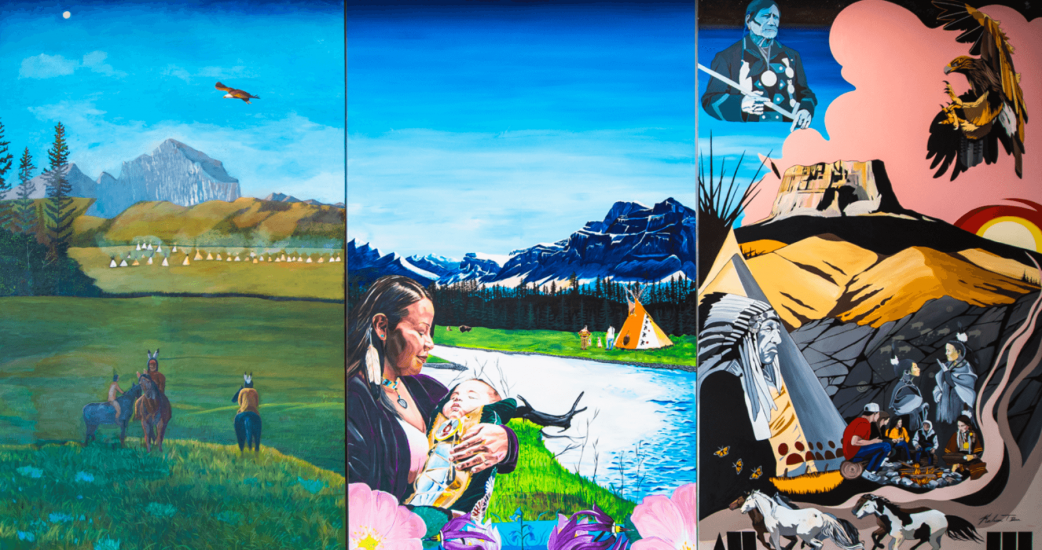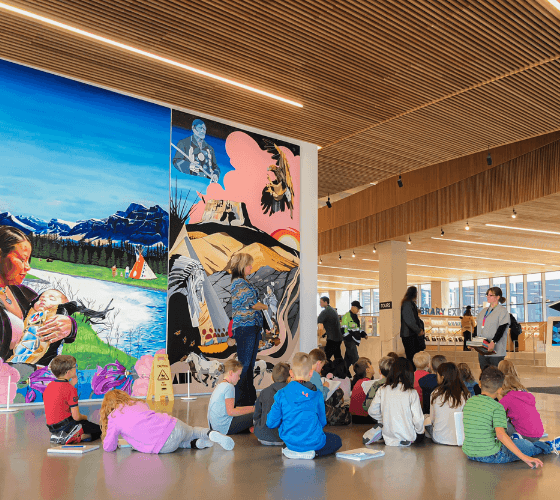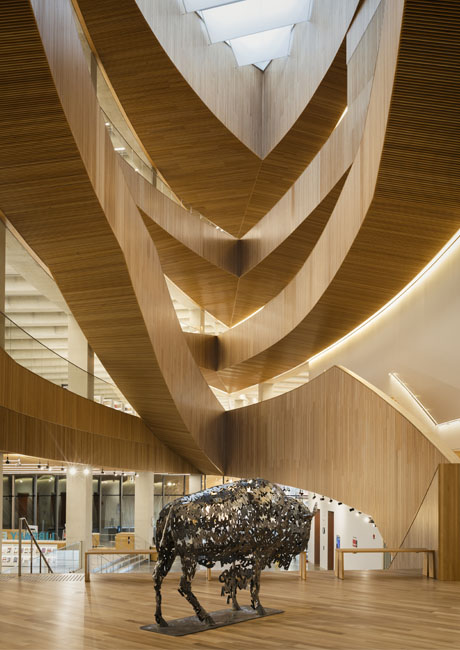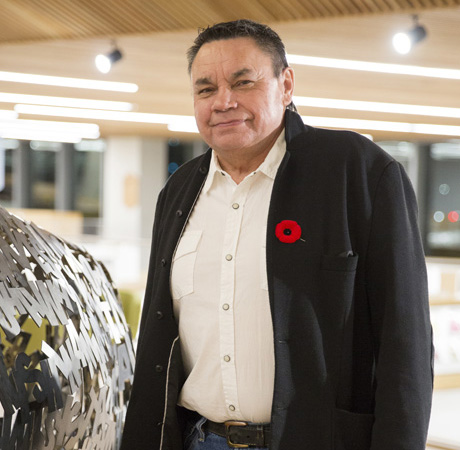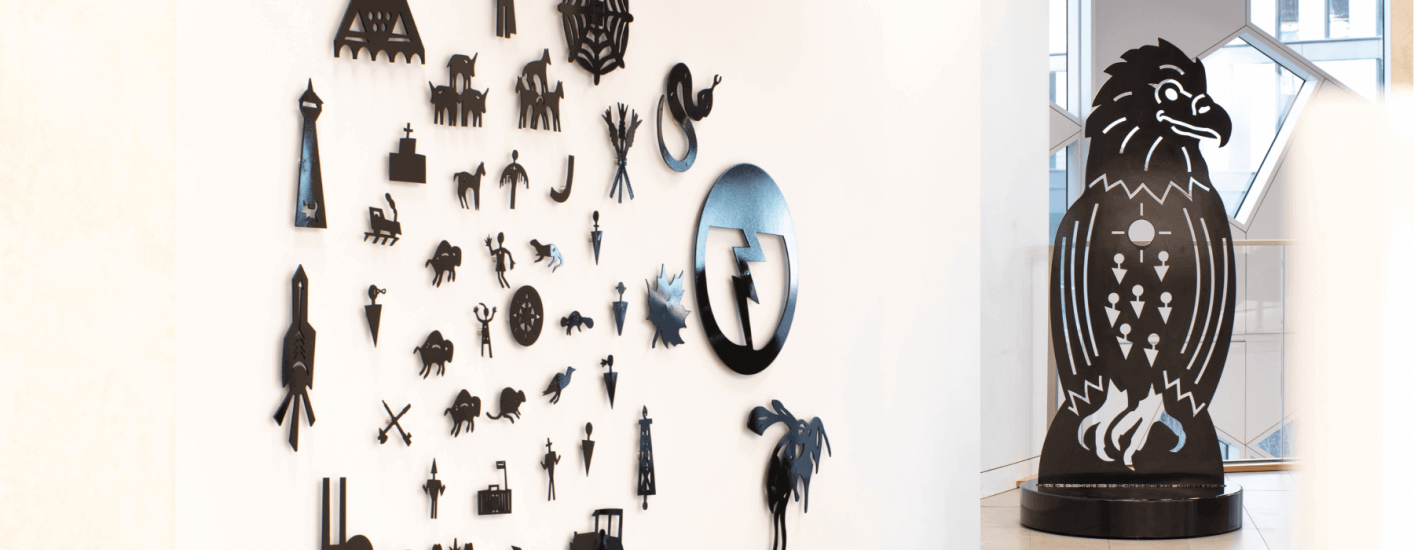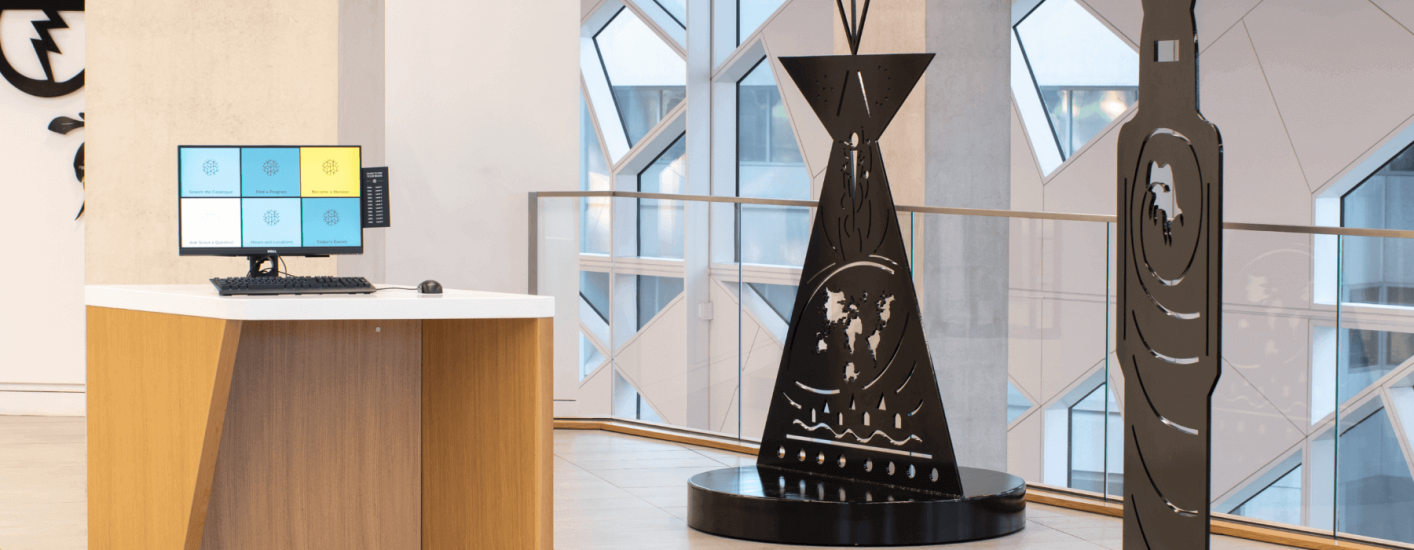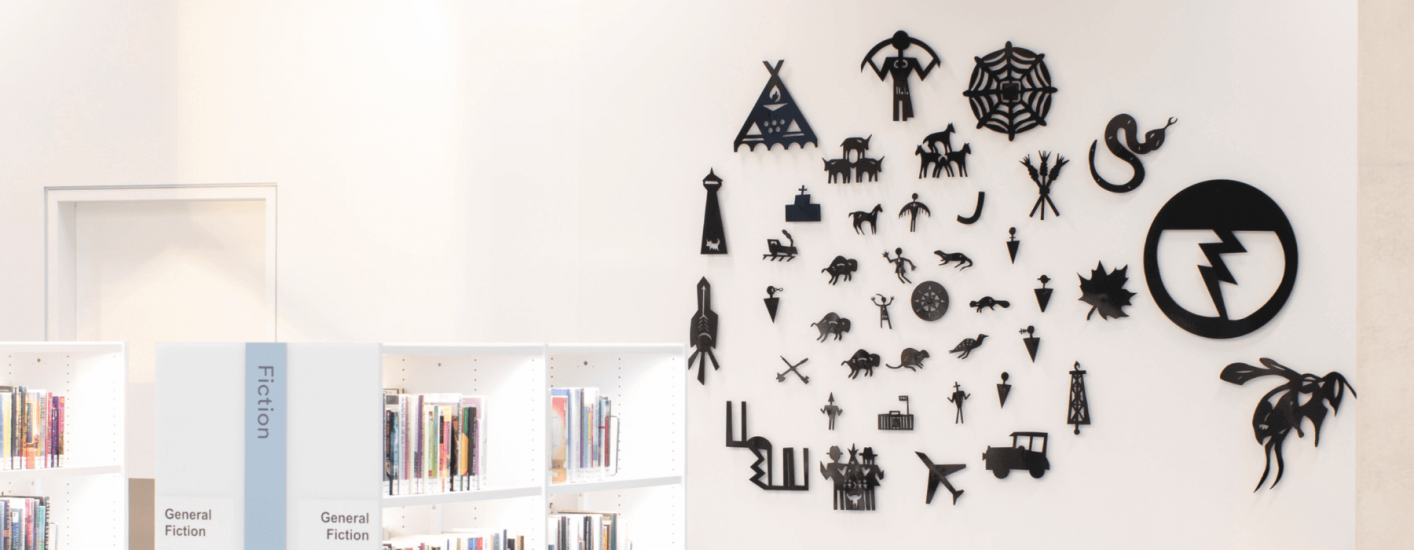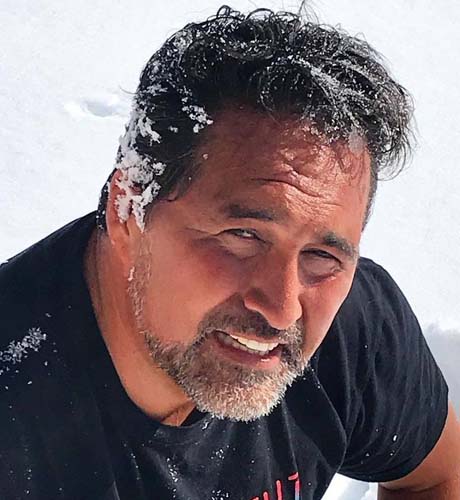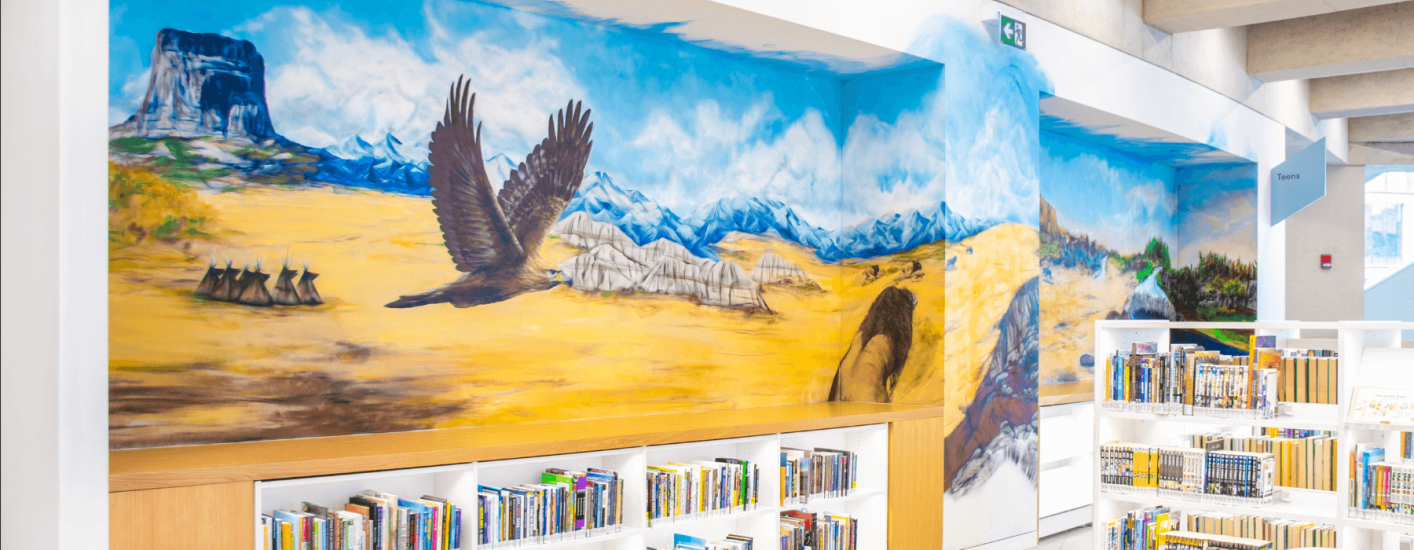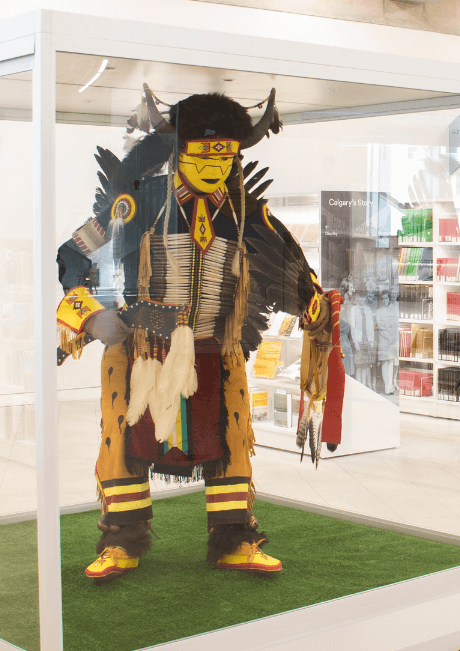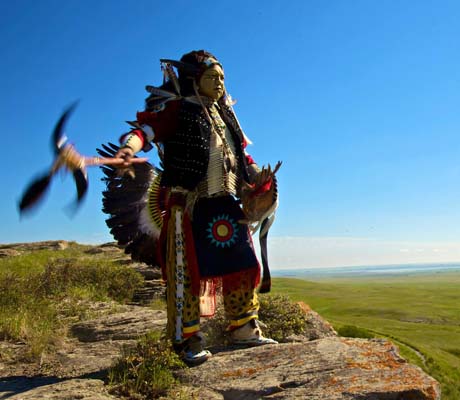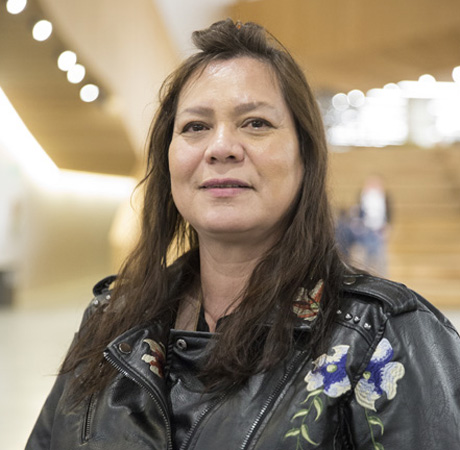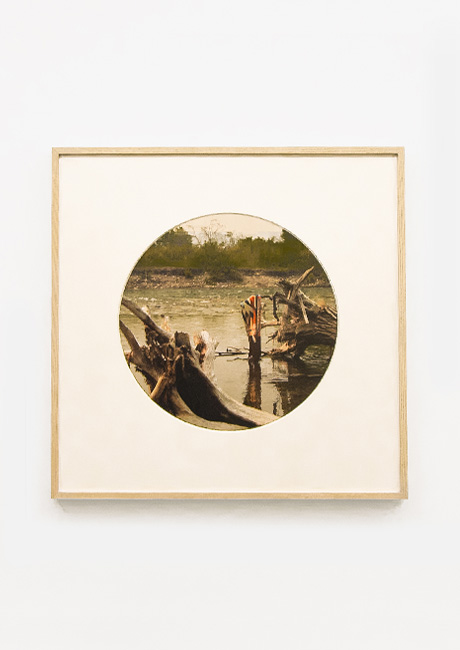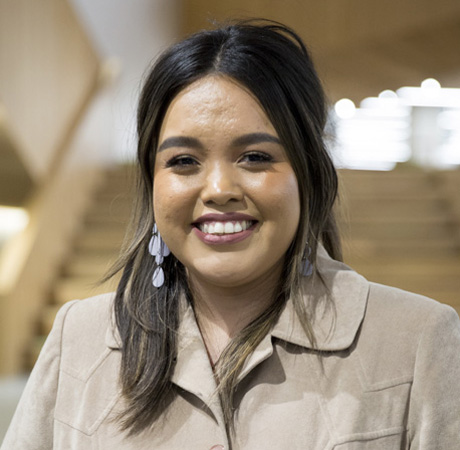Traditional Men’s Dance Regalia
Treffrey Deerfoot
Calgary's Story, Level 4 (2019)
Men’s Traditional Dance originates from the Blackfoot people of southern Alberta. Each dance has its own unique story, as does each outfit worn by its performers. An authentic outfit, even one made in modern times, is always built to last. Thus, each artist who creates a piece like this leaves a beautiful legacy with each outfit they create.
This dance regalia was constructed using traditional methods of making. The two-needle stitching method allows the beads to be pinned down more securely, resulting in beadwork that lays flat and allows for consistency in the geometric design. Taking after traditional regalia, none of the beads in this piece are metallic or plastic — only traditional colours and natural materials are used. These include leather, fur, feathers, bells, hoofs, horns, guard hair, gun shells, and cloth.
Beadwork is an artform that requires plenty of time and patience; it is a meditative practice. During the construction of this outfit, Deerfoot prayed as he worked to ensure beneficial energy was incorporated into every stitch.
Watch a video to hear Treffrey talk about his Men's Dance Regalia Indigenous Placemaking installation.

